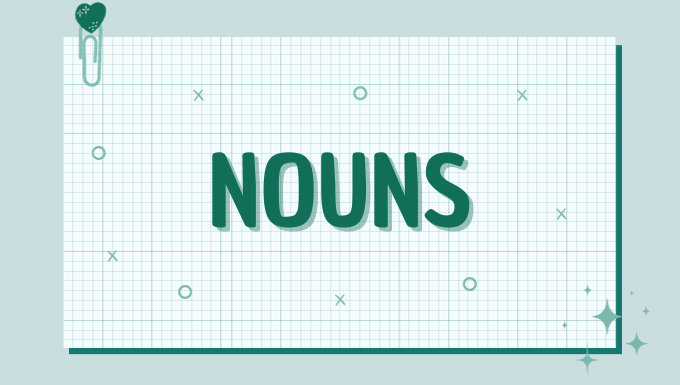
Introduction to Nouns
Nouns are a fundamental part of language, present in almost every sentence we speak or write. Simply put, a noun is a word that names something. This can be a person, place, thing, or idea. Understanding nouns is crucial for mastering any language because they are the main subjects in our sentences.
Types of Nouns
- Common Nouns: These are general names for people, places, things, or ideas. They are not capitalized unless they start a sentence. Examples: dog, city, happiness.
- Proper Nouns: These are specific names for particular people, places, or organizations and always start with a capital letter. Examples: Sarah, London, Google.
- Concrete Nouns: These are nouns that you can experience with your five senses. They are tangible and visible. Examples: apple, thunder, perfume.
- Abstract Nouns: Opposite to concrete nouns, these are about ideas, qualities, or states that you cannot see or touch. Examples: love, freedom, beauty.
Countable Nouns and Uncountable Nouns
- Countable Nouns: Nouns that can be counted, meaning you can add a number in front of them or put them in the plural form. Examples: cat/cats, book/books.
- Uncountable Nouns: These nouns cannot be counted and do not have a plural form. Examples: water, information, air.
Functions of Nouns in Sentences
Subject of the Sentence
The noun often acts as the subject of a sentence. It is the person, place, thing, or idea that is doing or being something. Example: The cat slept on the mat (The cat is the subject).
Object of the Sentence
Nouns can also be the object of a sentence, receiving the action of the verb. Example: Sarah ate an apple (Apple is the object).
Complement of the Sentence
Sometimes a noun gives us more information about the subject or object by acting as a complement. Example: Kevin is a teacher (Teacher complements Kevin).
Plural Forms of Nouns
Most nouns change their form to indicate more than one, typically by adding “s” or “es”. However, there are many irregular forms. Example: child/children, mouse/mice.
Possessive Forms of Nouns
Nouns can show possession, often by adding an apostrophe and “s”. This form shows ownership or a close relationship. Example: Sarah’s book, the dog’s bone.
Gender and Nouns
Some nouns have different forms for different genders. This is more common in other languages than English. Example: actor/actress, prince/princess.
Examples of Nouns Performing Various Jobs in Sentences
These are examples to illustrate how nouns can function differently in sentences. Let’s use the noun “dog” in various roles:
- Subject: “The dog barked loudly.”
- In this sentence, “dog” is the subject, as it’s performing the action of barking.
- Direct Object: “She hugged the dog.”
- Here, “dog” is the direct object, as it is receiving the action of being hugged.
- Indirect Object: “She gave the dog a bone.”
- In this example, “dog” is the indirect object. The bone is being given to the dog.
- Object of a Preposition: “She walked with the dog.”
- “Dog” is the object of the preposition “with,” showing who she was walking with.
- Possessive Noun: “The dog’s collar was shiny.”
- “Dog’s” is a possessive noun, showing ownership of the collar.
Each of these examples demonstrates a different grammatical function of the noun “dog” in a sentence.
Nouns Used as Adjectives
Nouns used as adjectives, often referred to as “attributive nouns,” occur when a noun modifies another noun, functioning similarly to an adjective. This grammatical feature allows the noun to describe or specify another noun, essentially providing more information about it. Here’s an explanation and some examples:
- Explanation:
- When a noun is used as an adjective, it usually comes directly before another noun, adding descriptive qualities to that noun. The first noun (used as an adjective) often indicates a purpose, type, or origin related to the second noun. This is a common way to form compound nouns in English.
- Examples:
- “Coffee table” – Here, “coffee” is a noun but is used as an adjective to describe the type of table, one typically used in a living room for placing coffee and other items.
- “School bus” – In this instance, “school” (a noun) is used as an adjective to describe the type of bus, specifically one that transports students to and from school.
- “Garden party” – “Garden” acts as an adjective describing where the party is held or its theme.
- “Chicken soup” – The noun “chicken” is used as an adjective to describe the type of soup, indicating its primary ingredient.
- “Book cover” – Here, “book” is used as an adjective to describe the type of cover, specifically a cover for a book.
In each of these examples, the first noun functions as an adjective, modifying the second noun. This grammatical structure is very common in English and is a key part of forming compound nouns.
Conclusion
Nouns are incredibly versatile and essential components of language. Understanding their types, functions, and forms is key to mastering language and effective communication. Whether you’re just starting to learn English or are looking to polish your grammar, paying attention to nouns is a great place to start.
FAQs About Nouns
- What is the easiest way to identify a noun?
Look for words that name people, places, things, or ideas. - Can a word be both a noun and another part of speech?
Yes, many English words can function as more than one part of speech depending on the context. - Why are proper nouns capitalized?
Capitalization helps to distinguish specific names from general nouns.
Remember, language is a living thing, and the way we use nouns can change and evolve. Happy exploring!